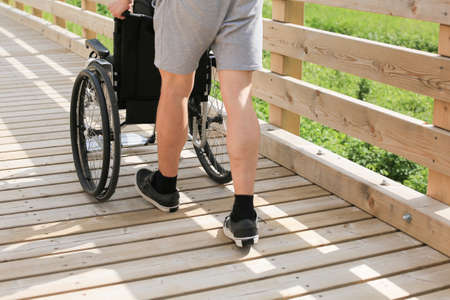Understanding NHS Rehabilitation: Definition and Scope
When we talk about rehabilitation within the NHS, it’s much more than just physical recovery after an illness or injury. Rehabilitation in the NHS context refers to a holistic, patient-centred approach designed to help individuals regain, maintain, or improve abilities that may have been diminished due to medical conditions or trauma. This encompasses a wide array of services and professionals working together, from physiotherapists and occupational therapists to speech and language therapists, all focused on restoring independence and quality of life.
Unlike general healthcare provision—which often centres on diagnosing and treating acute symptoms—rehabilitation is about supporting long-term recovery, adaptation, and empowerment. It recognises that every patient’s journey is unique, with personalised plans tailored to specific goals, whether thats returning to work, managing daily activities, or improving communication skills.
Within the NHS, rehabilitation services span several types:
- Acute rehabilitation: Delivered in hospital settings immediately following a severe injury or illness, aiming for rapid functional improvement.
- Community rehabilitation: Provided closer to home—often in community hospitals or patients’ own homes—to support ongoing recovery once intensive hospital care is no longer needed.
- Specialist rehabilitation: Targeted at complex needs such as neurological conditions (like stroke or brain injury), involving highly skilled multidisciplinary teams.
- Vocational rehabilitation: Focused on helping people return to employment or adapt their working life after illness or injury.
This broad scope ensures that rehabilitation within the NHS is not a one-size-fits-all service. It’s built around the principle of ‘personalised care’, which means placing patients and their families at the heart of every decision. Understanding this landscape is crucial for navigating your own or your loved one’s rehabilitation journey—and appreciating just how distinct these pathways are from routine medical care.
2. Initial Assessment: How the Patient Journey Begins
Embarking on an NHS rehabilitation pathway starts with a crucial step: the initial assessment. This phase shapes the entire patient journey, ensuring that care is tailored and responsive to individual needs. Here’s a detailed look at how patients are referred, what assessments they undergo, and the criteria that determine eligibility for rehabilitation services across the UK.
Referral Pathways: From GP or Hospital to Rehabilitation
The referral process usually begins when a health professional, most often a GP or hospital consultant, recognises that a patient would benefit from structured rehabilitation. Depending on whether the need arises in the community (e.g., after a gradual decline in mobility) or following an acute event (such as stroke or surgery), referrals can be initiated from various points within the NHS system.
Common Referral Sources
| Source | Typical Scenario |
|---|---|
| GP (General Practitioner) | Gradual functional decline, chronic illness management, post-injury support |
| Hospital Consultant/Discharge Team | Post-operative recovery, acute medical events (e.g., stroke, cardiac episode) |
| Community Health Services | Long-term condition management, falls prevention, occupational therapy needs |
Initial Assessment Process
Once referred, patients will undergo an initial assessment conducted by multidisciplinary teams—typically including physiotherapists, occupational therapists, nurses, and sometimes social workers. The assessment aims to build a holistic picture of each patient’s health status, daily living skills, personal goals, and support network.
What Does the Assessment Cover?
- Physical Function: Mobility, strength, balance, pain levels
- Cognitive Abilities: Memory, attention, problem-solving skills
- Psycho-social Factors: Emotional well-being, family support systems
- Activities of Daily Living (ADLs): Self-care, meal preparation, home safety
- Personal Goals: What the patient wants to achieve through rehabilitation
Patient Eligibility Criteria for NHS Rehabilitation Services
The NHS operates with finite resources and strict inclusion criteria to ensure those who most need rehabilitation receive it promptly. While specific criteria may vary slightly between Trusts and regions across England, Scotland, Wales, and Northern Ireland, common eligibility benchmarks include:
| Criterion | Description/Example |
|---|---|
| Clinical Need Identified | A clearly documented need for rehabilitation due to physical/cognitive impairment impacting daily life. |
| Able to Participate Actively | The patient must be able and willing to engage in therapy sessions. |
| Potential for Improvement | A reasonable expectation of measurable progress toward independence or function. |
| No Contraindications for Therapy | No medical conditions that would make participation unsafe. |
| Consent Provided | The patient (or their advocate) must consent to participate in the rehabilitation process. |
Navigating Waiting Lists and Prioritisation
The demand for NHS rehabilitation frequently outstrips capacity. As such, cases are triaged based on urgency and potential benefit. High-priority patients—such as those recovering from major surgery or severe stroke—are typically seen more quickly. GPs and hospital teams play a vital role in advocating for their patients throughout this process.
![]()
3. Personalised Care Plans and Goal Setting
One of the most distinctive features of NHS rehabilitation pathways is the focus on personalised care plans, crafted by multidisciplinary teams (MDTs) to reflect each patient’s unique needs and aspirations. These teams typically comprise physiotherapists, occupational therapists, speech and language therapists, nurses, doctors, and sometimes social workers or psychologists. The collaboration between professionals ensures that care plans are not just clinically appropriate but truly holistic.
How Multidisciplinary Teams Create Tailored Rehabilitation Plans
The process begins with a comprehensive assessment, where each MDT member evaluates the patient from their professional perspective. This could involve physical mobility tests, cognitive assessments, and an exploration of social circumstances. The team then comes together to discuss findings and jointly design a bespoke rehabilitation programme. This might include specific exercises, daily living skills training, communication support, or psychological therapies. By pooling their expertise, MDTs can anticipate challenges and adapt interventions to support every aspect of recovery.
Incorporating Patient Goals into Rehabilitation
Central to the NHS approach is the recognition that meaningful progress depends on what matters most to the patient. During planning sessions, patients are encouraged to articulate their goals—whether it’s returning to work, regaining independence at home, or simply being able to enjoy a favourite hobby again. These personal ambitions shape the direction and intensity of therapy. Rather than imposing a standardised programme, the MDT works with patients to break down larger goals into achievable steps, making rehabilitation both motivating and realistic.
The Role of Patients and Families in Planning
Patients and their families play an active part throughout the rehabilitation journey. From the outset, they’re invited to share insights about routines, preferences, and challenges at home—information that can make interventions more relevant and sustainable. Family members may also be included in education sessions or therapy reviews so they feel equipped to support ongoing progress outside clinical settings. This collaborative ethos reflects a broader cultural shift within the NHS towards shared decision-making: empowering individuals not just as recipients of care but as partners in their own recovery.
A Real-World Perspective
In practice, this person-centred approach can be transformative. For example, I’ve seen patients who initially felt daunted by their injuries rediscover confidence as they realised their voices were heard and respected in goal-setting meetings. Family involvement often brings extra encouragement and helps maintain momentum during tougher phases of rehab. Ultimately, it’s this blend of clinical expertise with genuine partnership that gives NHS rehabilitation its distinctive strength across diverse communities in the UK.
4. The Rehabilitation Pathways in Practice
When navigating rehabilitation through the NHS, patients and families will encounter a range of pathways designed to suit differing levels of need and complexity. Each pathway offers unique structures and support systems, with some overlapping features but also distinct practical differences. In this section, I’ll share real examples and insights based on my professional experience within several NHS Trusts, helping you understand how these pathways function in day-to-day practice.
Community Rehabilitation Services
Community rehab is often the starting point for those whose conditions are stable enough to be managed at home or in local clinics. Services typically include physiotherapy, occupational therapy, speech and language therapy, and sometimes psychological support. A key advantage is the focus on maintaining independence within one’s own environment. For instance, in the Manchester University NHS Foundation Trust, community teams conduct regular home visits and use personalised goal setting to encourage patient engagement and progress. Waiting times can vary, but many Trusts now offer virtual check-ins to increase flexibility.
Inpatient Rehabilitation Services
For individuals requiring intensive support—such as following a stroke or major surgery—inpatient services provide structured care within a hospital or dedicated rehab unit. These units offer 24-hour nursing support alongside daily multidisciplinary therapy sessions. At Guy’s and St Thomas’ NHS Foundation Trust, for example, inpatient pathways prioritise early mobilisation and coordinated discharge planning from day one. Patients benefit from peer support and access to equipment not available at home; however, transitions back to the community require robust follow-up to prevent setbacks.
Specialist Programmes
Certain conditions necessitate highly specialised rehabilitation—for instance, neurological injuries, spinal cord damage, or complex trauma cases. Specialist programmes are usually regional services within the NHS network that draw on advanced expertise and technology. The Queen Elizabeth National Spinal Injuries Unit in Glasgow exemplifies such provision: here, patients receive bespoke care plans developed by consultants, therapists, vocational advisors and social workers working collaboratively. Specialist pathways often involve longer stays but are crucial for achieving maximum functional recovery.
Comparison Table: Key Features of NHS Rehab Pathways
| Pathway | Main Setting | Typical Duration | Team Members Involved | Example NHS Trust |
|---|---|---|---|---|
| Community Rehab | Home/Clinic | Weeks to Months (part-time) | Physio, OT, SLT, Community Nurse | Manchester University NHS FT |
| Inpatient Rehab | Hospital/Rehab Unit | 2–12 Weeks (full-time) | Nurses, Doctors, Physio, OT, SLT | Guy’s & St Thomas’ NHS FT |
| Specialist Programme | Regional Centre/Unit | Months (intensive/full-time) | Consultants, Specialist Therapists Vocational Advisors |
Queen Elizabeth NSIU Glasgow |
Practical Takeaways from Real-World Experience
The most successful journeys involve close coordination between services—handovers between inpatient and community teams are critical. Families should actively engage with discharge planning meetings and ask about onward referrals early. My experience has shown that those who understand their pathway options are more empowered during recovery. Ultimately, while each pathway has its own culture and rhythm across different NHS Trusts, the shared aim remains: enabling people to regain independence and quality of life after illness or injury.
5. Navigating Challenges and Barriers
Despite the strengths of the NHS rehabilitation system, patients and carers often encounter a variety of hurdles on their journey towards recovery. Drawing from both practical experience and heartfelt stories shared within the community, it is clear that awareness and proactive management of these challenges can make a significant difference.
Waiting Times: A Common Frustration
One of the most frequently cited barriers is the waiting time for accessing rehabilitation services. High demand, limited resources, and regional disparities can mean lengthy waits before starting physiotherapy, occupational therapy, or specialist rehab programmes. For many, this waiting period is not just an inconvenience but a source of anxiety and uncertainty, potentially impacting motivation and overall outcomes.
Urban vs. Rural Access: Bridging the Gap
Geographical location plays a substantial role in shaping a patients rehabilitation journey. While urban areas may benefit from more extensive service provision and specialist centres, those living in rural parts of the UK often face longer travel times, fewer local options, and sometimes limited access to follow-up care. This disparity can create additional strain on patients and carers who already have much to manage.
Cultural Considerations: Respecting Diversity
The UK’s rich cultural tapestry means that rehabilitation pathways must be sensitive to different beliefs, languages, and family dynamics. Language barriers, lack of culturally appropriate materials, or unfamiliarity with how health services operate can all hinder engagement with rehab services. Recognising and addressing these issues—whether through translation services or community outreach—can foster greater trust and participation among diverse populations.
Personal Reflections: Overcoming Barriers Together
Having worked alongside patients from various backgrounds, I’ve witnessed firsthand how perseverance, resourcefulness, and open communication with healthcare teams can help navigate these obstacles. Community support groups, online resources tailored to local needs, and advocacy for equitable service provision are all powerful tools in ensuring no one is left behind on their rehab journey.
6. Outcomes, Progression, and Long-term Support
When navigating NHS rehabilitation pathways, understanding the expected outcomes and the ongoing support available is essential for both patients and their loved ones. Rehabilitation is rarely a linear journey; it’s marked by milestones, setbacks, and long-term adjustments that require patience, resilience, and robust support systems.
Typical Outcomes of NHS Rehabilitation
The primary goal of NHS rehabilitation is to maximise independence and quality of life. Typical outcomes include improved mobility, increased self-care abilities, better mental wellbeing, and greater participation in community life. For some, this might mean regaining the ability to walk unaided or return to work; for others, it’s about adapting to new ways of living following significant injury or illness. The NHS places a strong emphasis on person-centred outcomes—tailoring goals to each individual’s aspirations and circumstances rather than using a one-size-fits-all approach.
Monitoring and Measuring Progress
The NHS utilises several tools and frameworks to monitor progress throughout the rehabilitation process. Standardised assessments—such as the Barthel Index or the Functional Independence Measure (FIM)—are commonly used to track improvements in daily functioning. Regular multidisciplinary team meetings ensure that all professionals involved are aligned on patient progress and can adapt plans as needed. Patients and families are encouraged to participate actively in these reviews, providing feedback that shapes ongoing care. In my own experience supporting patients through recovery, open communication between clinicians, patients, and carers is crucial in keeping everyone motivated and realistic about what can be achieved within given timeframes.
Goal Setting and Review
Goals are set collaboratively at the start of a rehab pathway and reviewed at agreed intervals—often every few weeks. Adjustments are made based on progress or any emerging challenges. This iterative process allows for flexibility while maintaining focus on meaningful achievements that matter most to the patient.
Long-term Support Post-Discharge
Recovery doesn’t stop at discharge from an NHS service. To facilitate continued improvement and successful integration back into daily life, a range of long-term support options is available:
- Community Rehabilitation Teams: These teams provide ongoing therapy at home or in local clinics for those who need further support post-discharge.
- Self-management Programmes: Many conditions now have structured self-management courses—often run in partnership with charities—helping individuals build confidence in managing their health independently.
- Social Prescribing: GPs or link workers may refer patients to non-clinical services such as exercise groups, volunteering opportunities, or arts activities to boost wellbeing and reduce isolation.
Follow-up Appointments and Reviews
The NHS typically arranges follow-up appointments to review ongoing needs. These may include physical check-ups, medication reviews, or mental health assessments as required. For those with complex or fluctuating needs, case managers or care coordinators can help ensure continuity across different services.
A Personal Reflection
From my hands-on experience within NHS rehab settings, I’ve seen first-hand how vital post-discharge support is—not just for sustaining physical gains but also for emotional resilience and social reintegration. Recovery is a team effort: when clinical expertise is combined with family encouragement and community resources, people are far more likely to thrive in the long term. Ultimately, the NHS strives not only for clinical recovery but for genuine re-empowerment—enabling people to reclaim control over their lives after adversity.


